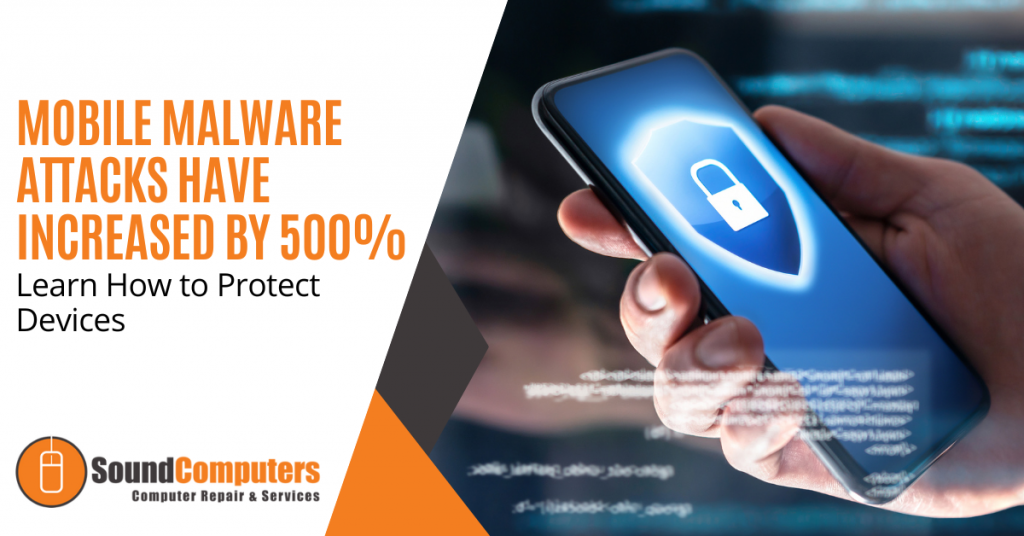
The previous years have seen an increase in cyberattacks that is projected to continue over time. Is your mobile phone adequately secured or is it at risk for a mobile malware attack? Users may be more vulnerable to cybercrime attacks and data breaches if they only use their mobile devices for browsing and other daily activities.
According to research, mobile malware attacks will rise to 500% if we do not take immediate action to mitigate them.
More sensitive and valuable data is transferred without restrictions as mobile devices are becoming increasingly essential to modern life which makes them a favorite target for scammers. As a result, the risk of mobile malware assaults is severe and requires immediate attention for businesses that rely on mobile devices to execute business operations regularly or that permit employees to use their cell phones and tablets as an aspect of their BYOD policy.
How Can I Protect My Mobile Device Against Mobile Malware Attacks
Below are nine protective measures that you can take to minimize the risk of a mobile malware attack:
Use a fingerprint or password lock detection.
Cybercriminals will at least need to pass that initial barrier if perhaps you forgot your mobile device on a supermarket counter or if it was stolen from your backpack or pocket. Additionally, shorten the duration of your password or fingerprint lock to at least 30 seconds.
Set up remote formatting.
If you lose your phone or it was stolen, setting up remote formatting prior to that incident can enable you to remotely format your phone (i.e. wipe off all the data in your phone). Also, you can know the whereabouts of your phone using the remote formatting strategy.
Encrypt your data.
You should try to encrypt your data if it isn’t currently the default setting on your mobile device. Protecting delicate information in this way is important for business communications (especially banking and investment apps).
Don’t download third-party apps.
You don’t have enough options if you’re using an iPhone. However, using the Google Play Store and disabling apps from unfamiliar sources keeps Android users reasonably safe. If you decide to use a third-party application, do your research to make sure that you don’t download a harmful one. Read reviews and don’t download an app if it requests too much access to personal information.
Download an efficient mobile antivirus.
Installing a credible antivirus application is better than letting the malware in and then discovering it later. Both free and premium mobile antivirus apps are widely available.
Take a brief look at your alternatives and download the one that you believe will best meet your needs.
Installing antivirus software will prevent malware from getting onto your mobile device and provide a wide range of services to improve the general efficiency of your mobile phone.
Browse carefully.
The same guidelines that are typically given as ‘do’s and don’ts’ when accessing the internet on your PC also apply to mobile devices. It is important to be careful about the websites that you visit and the email files that you click because either of these acts could allow malware to infect your system.
Be cautious when using your mobile device to surf the web.
Update your OS (Operating System).
Be sure to update your OS immediately when a new update is released. Running an old OS is an opportunity for malware to get past your firewalls.
System designers make a lot of effort to be ahead of any new malware tactics that cybercriminals use and provide you with enough protection. However, if you don’t make it a priority to keep updating your OS regularly, you won’t be able to benefit from this protection.
Public Wi-Fi can be dangerous.
Purchasing internet tools like mobile hotspots might enable you to protect your mobile device from hackers. Smartphone users should take adequate precautions when connecting to a public wireless network. It would be wise to delay connecting if the public Wi-Fi is not secured until you are near a more reliable internet connection.
To prevent malware from obtaining your data through public Wi-Fi, you should consider turning off your Bluetooth and Wi-Fi while not in use.
Know the latest mobile device threats.
A large percentage of people are unaware of the best practices for data security and cybersecurity.
If you use your phone constantly and spend a lot of money on a classy device, you need to be mindful of the risks that it may be subjected to.
Because protecting your mobile device is essential, it could take time to understand the guidelines and a bit more work to follow them, It is worth it.
Protect your Mobile Devices with Sound Computers
Sound Computers offers small businesses the most advanced technological solutions regarding Computer, IT and Networking. You can enjoy the speedy solution to your technology needs.
Need help? Get in touch!